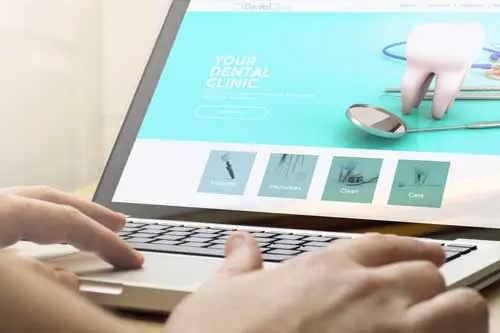2022/07/07
Dental Treatment Evolving with Digital Technology (Part 7)
The first part: How Should We View ‘Teledentistry’?
AI (Machine Learning, Deep Learning), Clinical Doctor, Telemedicine, Dentistry, Examination and Diagnosis
The New Options under the COVID-19 Pandemic
You might feel that times have changed dramatically over the past few years with the disaster due to COVID-19 pandemic. Many of you might have experienced first-hand the acceleration of digitisation in healthcare becoming a hot topic for example, online treatment in medicine as one of these changes.

Telemedicine in dentistry is called 'teledentistry'. This area of digitalisation has already been well ahead for more than a decade, defined in a 2013 paper as ‘the provision of dental treatment and advice from a distance as information technology, not in direct contact with the patient’. A wide range of applications had begun to be used, from digital medical records, electronic referral systems and electronic imaging to remote consultation, for prevention and diagnosis to general dental treatment, detecting of early caries and patient education. The aim is to improve the quality of care by increasing efficiency, especially in areas where access to healthcare is difficult¹⁾. For example, there are reports of its use in care homes for the elderly²⁾. I have also had experience of providing treatment in an institution for the aged during my postgraduate work outside the hospital several years. Treating patients with illnesses and disabilities might be different in a general dental practice. Each patient's situation requires additional considerations, such as difficulties with brushing their teeth or even with posture when undergoing procedures. In addition, patients who have difficulty in freely accessing a dental clinic and who are in hospitals or institutions without dental services, often have to wait until a set date for a visiting dentist or dental hygienist. There are reports from the world that teledentistry can be useful in these difficult-to-access environments to send digital images of the patient's mouth for advice and provisional diagnosis of whether treatment is needed²⁾.
It is pointed out that there have been problems in many countries accessing dental treatment because of the COVID-19 pandemic. There are also situations in developed countries, such as the UK, where problems with the healthcare system regarding dental care were originally identified. According to the British Dental Association (ADG), due to years of underfunding and policy, only a third of adults and half of children can see NHS dentistry. In the UK, tooth extraction is the biggest reason for children to be admitted to hospitals³⁾⁴⁾.
In the past, teledentistry has grown in areas where there is a shortage of dental professionals and for those who do not have access to adequate healthcare. Studies have already reported that they may be able to reduce the cost of treatment with some degree of reliability and validity⁵⁾⁶⁾⁷⁾.

Furthermore, the COVID-19 pandemic caused problems in various countries where it was difficult to obtain treatment due to the closure of dental institutions. At this time, 23% of dentists in the USA were using teledentistry and virtual platforms⁸⁾. There was a generally positive view of expanding access to treatment in dentistry. Interestingly, or perhaps inevitably, early adopters tended to perceive the benefits as outweighing the drawbacks, while dentists who took on the project later focused on the disadvantages of the initial costs and were concerned about the level of care provided by teledentistry⁵⁾⁸⁾.
Specifically, early adopters noted that it is useful for discussing treatment plans⁵⁾. You might have discussed with your dentist how you would like to be treated. Dental treatment options can be as complex as a puzzle, to the extent that the condition of the teeth (dental formula) is used to identify individuals. Certainly, online interviews appear convenient for discussing x-rays, models, treatment details and treatment costs in documents. However, while it might be possible to devote such time because of the high cost of healthcare in the USA, it might be difficult in Japan due to insurance restrictions. Other examples include consulting a photo of the mouth taken with an iPhone to see roughly what kind of treatment is needed, prescribing emergency medication, and providing education and promotion on oral hygiene⁵⁾.

On the other hand, ethical issues and quality of treatment were mentioned by the cautious group⁵⁾. We can understand the idea in terms of treatment responsibility that as dentists we are unwilling to accept receiving payment for treatment for advice on content that cannot be x-rayed or examined. The diagnosis and treatment decisions based on x-rays, various tests and experience are so specialised that heated discussions can occur even between dentists. A specialised camera is sometimes used in dentistry to take photographs, and it is imaginable that diseases can be overlooked if only a surface is seen in an ordinary photograph without x-ray.
In the next part of this article, we will discuss the concerns about teledentistry from the cautious viewpoint and the advantages revealed by its introduction under the COVID-19 pandemic.
(Continued to the next part)
【Source】
https://www.wfpha.org/provision-of-oral-health-care-for-the-institutionalized-elderly/ (accessed 05 July 2022)
https://dentistry.co.uk/wp-content/uploads/2022/05/ADG-Report_The-urgent-need-to-level-up-access_April-2022_V3.pdf (accessed 05 July 2022)
We have not received any rewards from the publishers for writing this manuscript.
The information contained in this article is compiled by the respective authors based on publicly available information. We assume no responsibility whatsoever for any damage or disadvantage caused by actions taken based on such information. Unauthorized reproduction of articles, photos, charts, etc. is prohibited.
Copyright © 2022 LSMIP office / CM Plus Corporation
A Series of Articles

